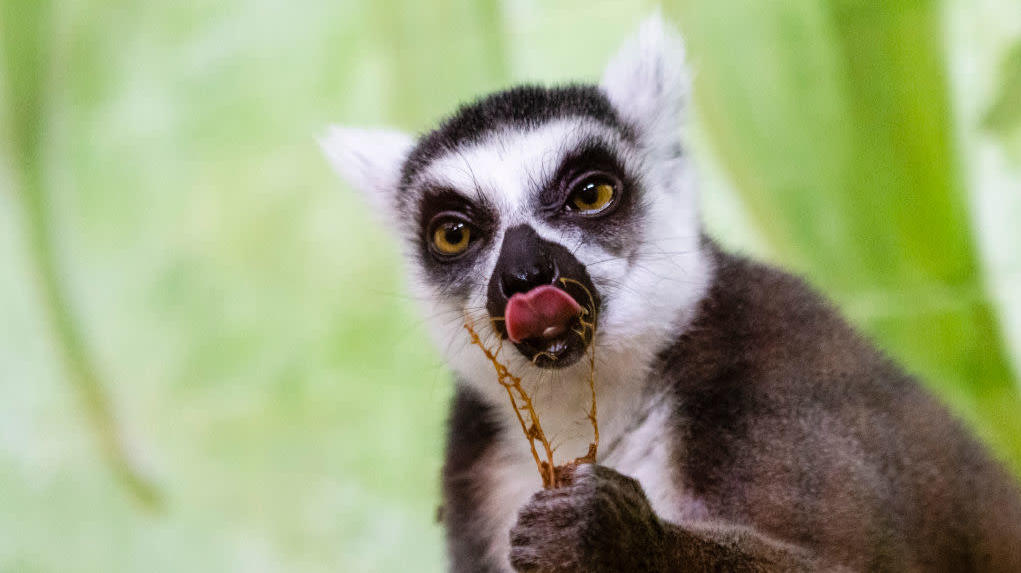Lemurs Find Food By Following Their Nose—it Always Knows!
We have all heard amazing things about the sensory organs of other animals, how elephants can feel approaching predators through their feet and how dogs can track all the neighborhood news through a few drops of pee. But what of primates? Does walking around on two legs mean we no longer need extra-special sensory abilities?
Ha, ha, ha, not so! A recent study out of NYU, published in the American Journal of Physical Anthropology, shows that ring-tailed lemurs can detect food smells from more than 50 feet away—but only if the wind is blowing in the right direction. If it's not, well, sucks to be a hungry lemur.
This discovery was made at the Lemur Conservation Foundation in Myakka City, Florida. Researchers from the NYU College of Dentistry hid containers of real cantaloupe and fake cantaloupe in the forest underbrush between 13 and 56 feet off a path frequently used by the lemurs. Then they waited to see what would happen. Science Daily explains:
Smells are carried by the wind in "odor plumes," which animals navigate by monitoring the strength of a smell as they move. They sniff the air at one location, then move and sniff the air again, to see if they are getting closer to the smell in question.
The lemurs were able to find the cantaloupe when the wind blew the aroma of the fruit toward them.
It took the lemurs a bit longer to find the cantaloupe that was stashed farther away, but they managed. They did not, however, find any of the fake cantaloupe.
The researchers were very proud of the lemurs' ability to follow their noses. "The results indicate that olfaction may be used to respond to cues from distant sources," said anthropologist Elena Cunningham, the lead author of the study. "The ability to sniff out distant foods may be a critical foraging skill for lemurs and other primates."
